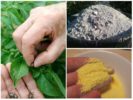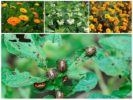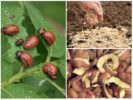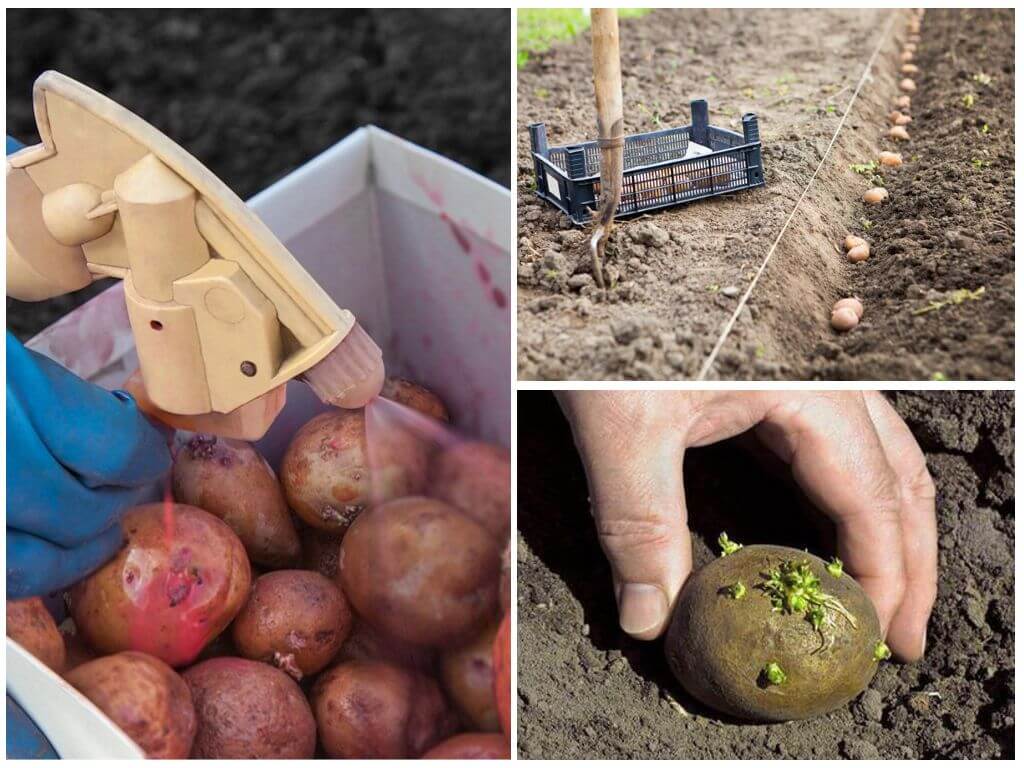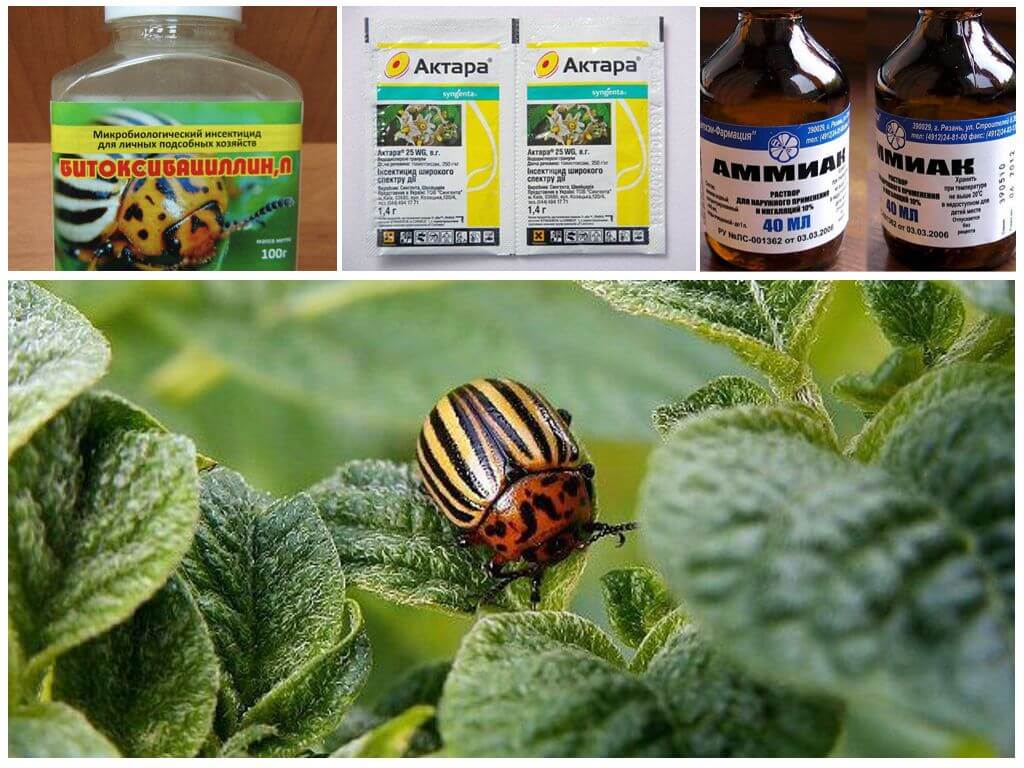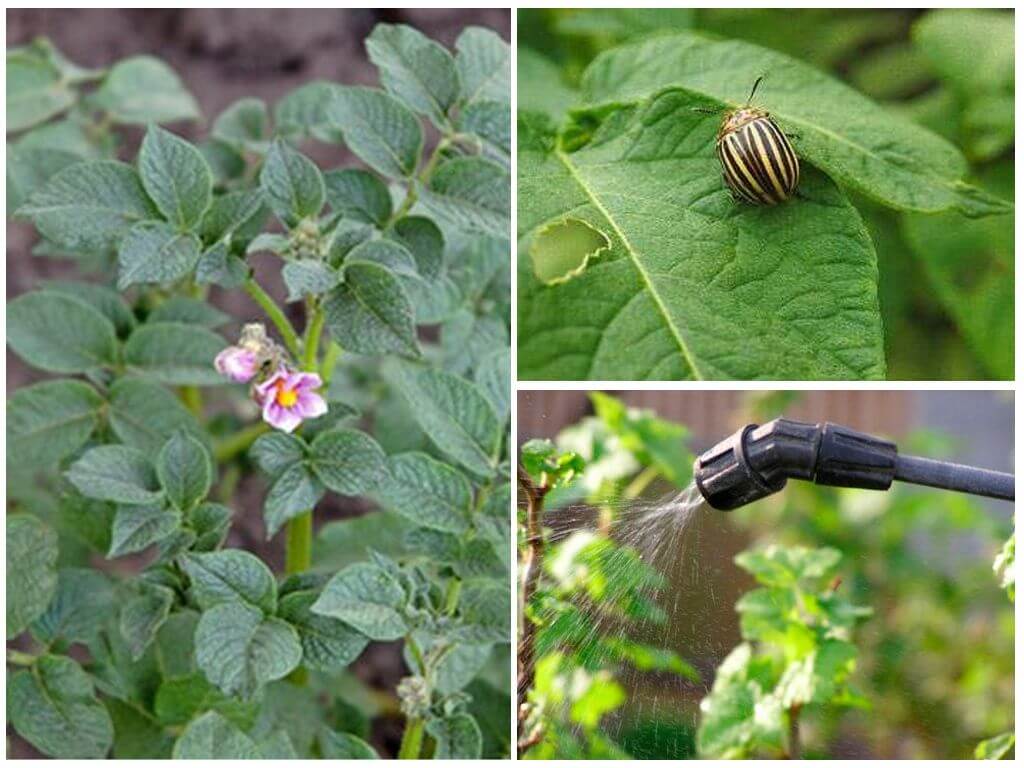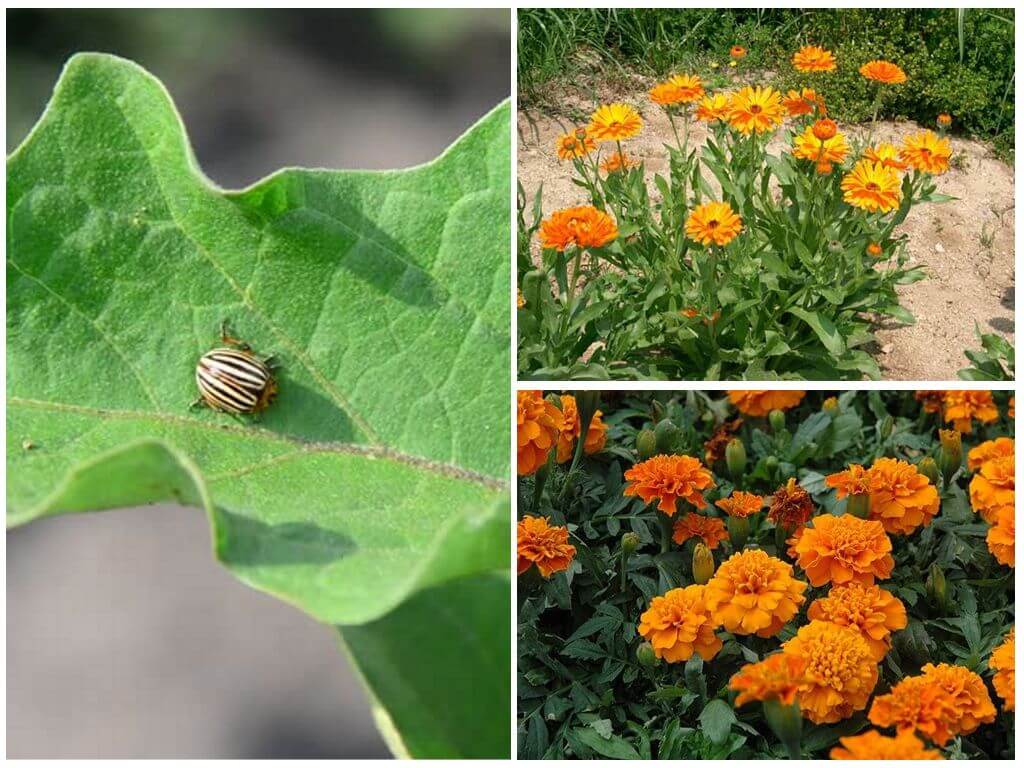- Fighting the Colorado potato beetle without chemistry
- Plant repellents from Colorado potato beetle
- Infusions and decoctions from the Colorado potato beetle
- Sawdust and potato peelings from the Colorado potato beetle
A big problem for every summer resident is the annual fight with the Colorado potato beetle. After all, the invasion of pests adversely affects not only the quality, but also the number of root crops grown. Despite the variety of pesticides on the shelves of gardening shops, many gardeners prefer folk recipes. They can not only significantly reduce the number of pests, but also not harm the crop. How to get rid of the Colorado potato beetle without chemistry will be discussed in this article.
Manual collection
Methods of combating the Colorado potato beetle without chemistry are very diverse. One of the easiest is manually collecting insects. Despite the complexity of the process, it is quite possible to collect pests manually in a small area. For sites with a large area, this method is completely unacceptable.
On a note!
Do not try to kill the collected insects in the aisles. It is preferable to use a tank filled with diesel fuel, kerosene or salt solution.
Dusting
To protect potatoes from the Colorado potato beetle without using chemistry, it is possible by pollination of beds with natural means.
Wood ash
One of the safe One of the safe folk remedies is wood ash is wood ash. Moreover, gardeners with experience recommend using birch ash for this purpose. It is enough to sprinkle the plants with raw materials, and after two days the number of pests will significantly decrease.
On a note!
The construction of a simple device will greatly simplify the procedure. The ash is placed in a gauze bag, which is subsequently fixed to the end of the stick. To crush the ash powder, just stir a little with a stick.
It is preferable to carry out this procedure in the morning, while the leaves still have dew. The frequency of treatments depends on the period of plant development: before flowering, 1 treatment in 2 weeks is enough, after flowering dusting with ash is carried out once a month.
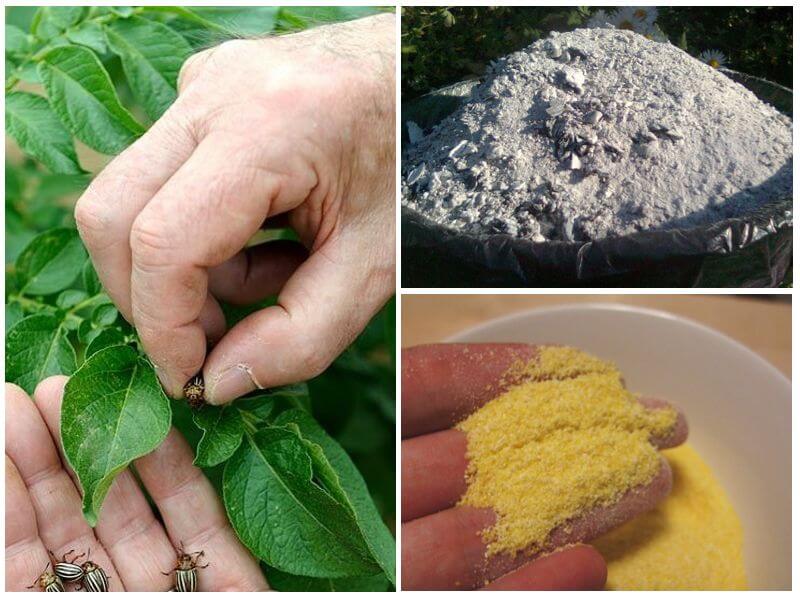
Wood ash can also be used to prepare a solution, which is then sprayed with insect beds. To prepare the working composition, 1 kg of raw material is poured into 10 liters of water and boiled for 15 minutes. The resulting broth is insisted for at least two days. After which, 40 g of crushed laundry soap are added to it and an additional 10 l of water are poured. The mixture is thoroughly stirred and used as intended.
You can also use ash when planting potatoes, pouring a small amount of raw material into each well. No less effect is given by sprinkling with the composition of row spacing.
Corn flour
Corn flour also has similar properties, which is also applied to the leaves of the crop. Caught in the digestive tract Colorado potato beetle the composition will cause him digestive problems, the consequence of which will be the inevitable death of the insect.
On a note!
In a similar way for Colorado potato beetle apply gypsum and cement.
Plant repellents

In order not to have to use chemistry in the garden against the Colorado potato beetles, some gardeners plant strongly odorous plants next to potato beds or between them, whose aroma cannot be tolerated by insects. Perfectly protect the landing:
- marigolds and nasturtium;
- calendula and tansy;
- night violet and cucumber grass;
- catnip and walnut;
- white mustard.
The double benefit of planting in the aisles, diagonally or along the perimeter of onions, horseradish, garlic or beans. Such crops serve not only as protection, but also yield crops.
Alcohol
Some gardeners, wanting to fight the Colorado potato beetle without chemistry, use alcohol. To do this, collect insects from different places in the garden and place them in a container with vodka. After a while, the pests are released, giving them the opportunity to try an alcoholic drink.
The essence of this method is that upon returning to their relatives, “drunk leaf beetles” warn their brethren about the threat in this territory. As a result, the pest population goes in search of more favorable habitats.
Infusions and decoctions

You can also process potatoes from a beetle without chemistry with infusions and decoctions, for the preparation of which insecticides are used.
- Nut. Hazelnut infusion is very effective against potato leaf beetles. 1 kg of fresh leaves is poured with 10 liters of boiling water, covered and left to infuse for 5-7 days. After which the mixture is filtered and used for spraying garden crops. For the preparation of the broth, you can also use nutshells. 300 g of raw materials are placed in a bucket of water and brought to a boil. After which the mixture is insisted for a week. Strained infusion is sprayed with potatoes, eggplant or other cultures affected by the Colorado potato beetle.
- Onion peel. Onion husk is capable of replacing chemistry in the fight against the Colorado potato beetle. 300 g of raw material is poured into 10 liters of hot water. The infusion is ready for use after a day, for spraying it is pre-filtered.
- Elecampane. Another analogue of chemicals is elecampane. Finely chopped dried plant roots (100 g) are poured with boiling water (10 L) and insisted for 1.5-2 hours. Filtered infusion is sprayed on the already strengthened tops.
- Tobacco. To cope with the Colorado potato beetle without chemistry is possible in the presence of tobacco. 0.5 kg of the crushed plant is poured with a bucket of water and put in a dark place for insisting for 2-3 days. The resulting infusion is filtered and 40 g of grated laundry soap is added to it to enhance the fixing properties.
- Garlic. Chemistry is not needed if you fight the Colorado potato beetle with garlic. To prepare the infusion, grind 200 g of garlic teeth or arrows. Prepared raw materials pour 10 liters of boiling water and insist for 24 hours. To enhance fixation in strained infusion add 2-3 tbsp. l liquid soap or other detergent.
- No less effective against pests of celandine. The broth is prepared as follows: ½ volume of the bucket is filled with a finely chopped plant and poured to the top with cold water. The container is placed on a gas stove and simmered over low heat for 15-20 minutes. The concentrated broth obtained in this way must be diluted with water in a proportion of 1:20 before use.
- Birch tar. 1-2 tablespoons of tar per bucket of water are bred
Sawdust
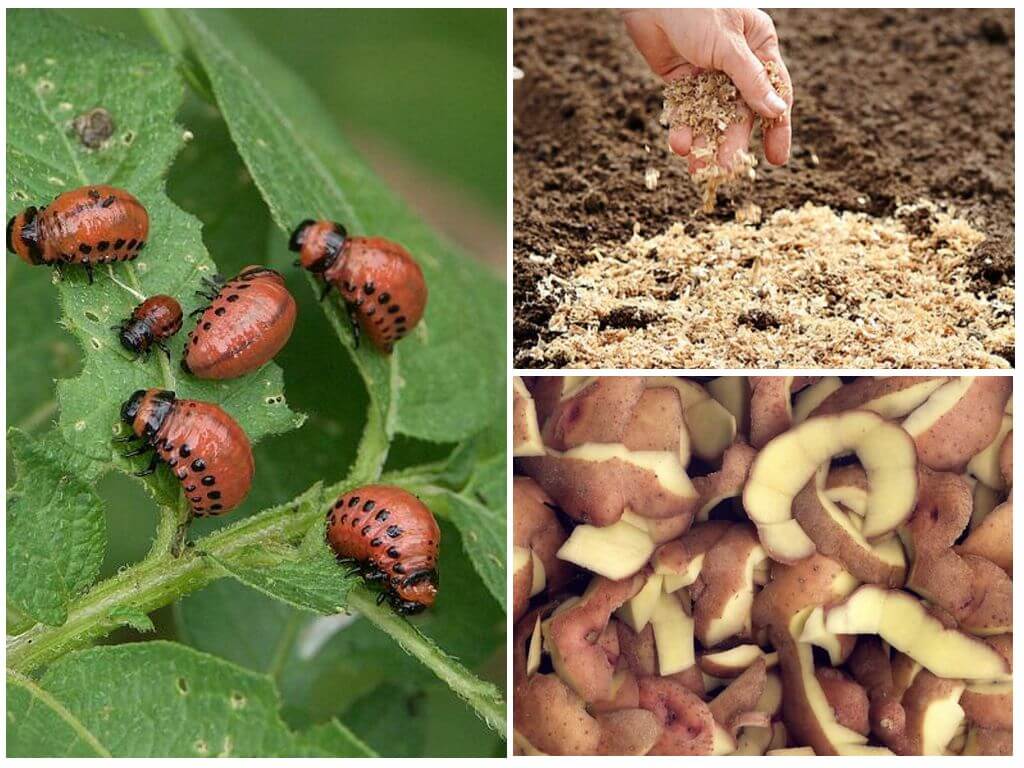
The high sensitivity and peculiarity of the Colorado potato beetle to respond to harsh aromas can be directed to the protection of garden plantings. To do without chemistry, it is enough to scatter birch or pine sawdust between the rows, the aroma of which will scare off striped parasites.
Lures
It is possible to influence pests without chemistry through baits.For this, small potatoes are cut into several parts, which are soaked in kerosene or gasoline for 2-3 days. Such "time bombs" are deployed in different areas of the site. Those who eat the prepared treats of insects will inevitably die.
It is possible to prevent the spread of insects if you sprinkle the beds in several places with fresh potato peelings before planting the plants. It is enough to regularly inspect such baits for the presence of insects in them and, as they accumulate, the remaining vegetables should be poured with kerosene or gasoline. For complete disposal, it is better to set them on fire.
On a note!
Colorado beetles will not be allowed to leave for wintering traps set in autumn. 10-15 days before digging potatoes, the tops are cut off and stacked in a heap. When a significant number of malicious individuals gather in it, the trap is doused with kerosene and set on fire.
Natural enemies
To protect crops from the Colorado potato beetle, you can do without chemistry by attracting natural enemies of the insect to the suburban area. These are:
- guinea fowl and turkeys;
- pheasants and partridges;
- some types of chickens.
To feathered steel eat Colorado potato beetle. Together with the usual food, the chickens are given insect larvae. Upon reaching the same 3-month age, birds are already able to independently find the Colorado beetles on tops.
Not only birds, but also some insects feed on the Colorado leaf beetle. These include a ladybug, lacewing, ground beetle, as well as some bugs and spiders. However, it should be understood that it is completely impossible to get rid of the pest in this way, but it is quite possible to regulate the number of parasite insects.
